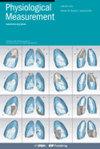用于检测极早产新生儿脑电图爆发间期的自适应阈值算法。
IF 2.3
4区 医学
Q3 BIOPHYSICS
引用次数: 0
摘要
本研究为早产儿脑电图(EEG)中的脉冲串检测提供了一种自适应阈值算法,并利用临床实际脑电图数据对其性能进行了评估:我们开发了一种自适应阈值算法,用于早产儿脑电图记录中的脉冲串检测。为了评估该算法在现实世界中的适用性,我们在 30 个临床脑电图记录数据集上对该算法进行了测试:研究人员之间的吻合度很高,卡帕值为 0.73(0.68 - 0.79 量级间范围)。该算法与一位临床专家的一致性为 0.73(0.67 - 0.76),灵敏度和特异性分别为 0.90(0.82 - 0.94)和 0.95(0.93 - 0.97):自适应阈值算法在检测早产儿临床脑电图数据中的突发性模式方面表现强劲,突出了其实用性。经过微调的算法达到了与人类评分员相似的性能。该算法被证明是早产儿脑电图脉冲串自动检测的重要工具。本文章由计算机程序翻译,如有差异,请以英文原文为准。
Adaptive threshold algorithm for detecting EEG-interburst intervals in extremely preterm neonates.
This study provides an adaptive threshold algorithm for burst detection in electroencephalograms (EEG) of preterm infantes and evaluates its performance using clinical real-world EEG data.
Approach: We developed an adaptive threshold algorithm for burst detection in EEG recordings from preterm infants. To assess its applicability in the real-world, we tested the algorithm on a dataset of 30 clinical EEG recordings which were not preselected for good quality, to ensure a real-world scenario.
Main results: Interrater agreement was substantial at a kappa of 0.73 (0.68 - 0.79 inter-quantile range). The performance of the algorithm showed a similar agreement with one clinical expert of 0.73 (0.67 - 0.76) and a sensitivity and specificity of 0.90 (0.82 - 0.94) and 0.95 (0.93 - 0.97), respectively.
Significance: The adaptive threshold algorithm demonstrated robust performance in detecting burst patterns in clinical EEG data from preterm infants, highlighting its practical utility. The fine-tuned algorithm achieved similar performance to human raters. The algorithm proves to be a valuable tool for automated burst detection in the EEG of preterm infants.
求助全文
通过发布文献求助,成功后即可免费获取论文全文。
去求助
来源期刊

Physiological measurement
生物-工程:生物医学
CiteScore
5.50
自引率
9.40%
发文量
124
审稿时长
3 months
期刊介绍:
Physiological Measurement publishes papers about the quantitative assessment and visualization of physiological function in clinical research and practice, with an emphasis on the development of new methods of measurement and their validation.
Papers are published on topics including:
applied physiology in illness and health
electrical bioimpedance, optical and acoustic measurement techniques
advanced methods of time series and other data analysis
biomedical and clinical engineering
in-patient and ambulatory monitoring
point-of-care technologies
novel clinical measurements of cardiovascular, neurological, and musculoskeletal systems.
measurements in molecular, cellular and organ physiology and electrophysiology
physiological modeling and simulation
novel biomedical sensors, instruments, devices and systems
measurement standards and guidelines.
 求助内容:
求助内容: 应助结果提醒方式:
应助结果提醒方式:


